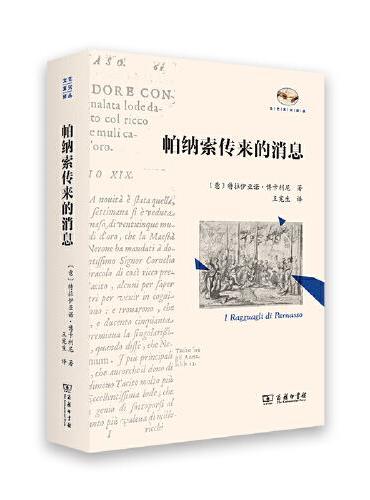新書推薦:

《
悬壶杂记:医林旧事
》
售價:NT$
240.0

《
谁之罪?(汉译世界文学5)
》
售價:NT$
240.0

《
民国词社沤社研究
》
售價:NT$
640.0

《
帕纳索传来的消息(文艺复兴译丛)
》
售價:NT$
495.0

《
DK威士忌大百科
》
售價:NT$
1340.0

《
小白学编织
》
售價:NT$
299.0

《
Android游戏开发从入门到精通 第2版 王玉芹
》
售價:NT$
495.0

《
西班牙内战:秩序崩溃与激荡的世界格局:1936-1939
》
售價:NT$
990.0
|
| 編輯推薦: |
|
纳米尺度的光子学和光谱是一门研究在纳米尺度上光与物质相互作用,并在纳米尺度对光的散射、透射、吸收、折射、量子态等进行调控。 本书系统介绍了纳米尺度下光子学和光谱学的基本物理原理,以及它们的相互作用机制。还介绍了金属表面等离激元的激发、探测、和对分子光谱的增强机制,其中包括表面等离基元增强的吸收、荧光、拉曼、光学成像等。
|
| 內容簡介: |
|
本书系统介绍了纳米尺度下光子学和光谱学的基本物理原理,以及它们的相互作用机制。还介绍了金属表面等离激元的激发、探测和对分子光谱的增强机制,其中包括表面等离基元增强的吸收、荧光、拉曼、光学成像等。此外,还揭示了表面等离基元和激子耦合相互作用的物理机制,进一步阐释了这种相互作用在表面催化反应中的应用。
|
| 關於作者: |
|
孙萌涛,北京科技大学,教授,以通讯作者(或第一作者)在Light: Science and Applications, Advanced Optical Materials, Advanced Science, Small, Materials Today Physics等国际重要期刊发表SCI 论文超过300篇,其中ESI 高引论文10篇。论文引用11000多次, H-index 60。Researcher ID: B-1131-2008。2020年和2021年连续两年Elsevier 高被引学者。结题科技部重大研究计划(子课题负责人),结题基金委重大研究计划培育项目2项(课题负责人),结题基金委面上项目2项(课题负责人),和结题基金委青年基金(负责人)。
|
| 目錄:
|
CHAPTER 1Introduction
1.1Concept of Spectroscopy
1.2Concept of Photonics and Plasmonics
1.3Concept of Plasmon-Enhanced Spectroscopy
1.3.1Plasmon-enhanced fluorescence
1.3.2Plasmon-enhanced Resonance fluorescence energy transfer
1.3.3Surface-enhanced Raman scattering
1.3.4The remote-excitation of SERS
1.3.5Tip-enhanced Raman scattering spectroscopy
1.3.6Remote excitation-TERS microscopy
1.3.7Plasmon-enhanced coherence anti-Stokes Raman scattering images
References
CHAPTER 2Molecular Spectroscopy
2.1Jablonski Diagram
2.2Electronic State Transition
2.2.1Ultraviolet-visible-near IR absorption spectroscopy
2.2.2Two-photon absorption spectroscopy
2.2.3Fluorescence spectroscopy
2.2.4Fluorescence resonance energy transfer
2.3Vibration spectroscopy
2.3.1Raman spectroscopy
2.3.2Infrared spectroscopy
2.3.3Modes of molecular vibration
2.3.4The difference between Raman and spectra
2.4Rotational State
2.5Electronic and Vibrational Spectroscopy by Circularly Polarized Light
2.5.1Electronic circular dichroism
2.5.2Raman optical activity
References
CHAPTER 3Photonics and Plasmonics
3.1Introduction
3.2Exciton
3.2.1Brief introduction of excitons
3.2.2Exciton classification
3.3Polariton
3.3.1Brief introduction of polariton
3.3.2Polariton types
3.4Plasmon and surface plasmons
3.4.1Plasmons
3.4.2Surface plasmons
3.4.3Surface plasmon polaritons
3.5Plasmon-Exciton Coupling: Plexciton
References
CHAPTER 42D Borophene excitons
4.1Introduction
4.2Monolayer borophene
4.2.1Monolayer borophene on Ag(111)
4.2.2Monolayer borophene on Al(111)
4.2.3Monolayer borophene on Ir(111)
4.2.4Monolayer borophene on Au(111)
4.2.5Monolayer borophene on Cu(111)
4.3Bilayer borophene
4.3.1Bilayer borophene on Ag(111)
4.3.2Bilayer borophene synthesis on Cu(111)
4.4Borophene heterostructure
4.4.1Borophene-PTCDA lateral heterostructure
4.4.2Borophene-Black phosphorus heterostructure
4.4.32D/1D borophene-graphene nanoribbons heterostructure
4.4.4Borophene-graphene heterostructure
References
CHAPTER 5Surface Plasmons
5.1Brief Introduction of SPs
5.2Physical Mechanism of SPs
5.2.1Drude model
5.2.2Relationship between Refractive Index and Dielectric Constant
5.2.3Dispersion relations
5.3Localized SPs
5.3.1LSPs in metallic nanosphere
5.3.2LSPs in coupled metallic NPs: parallelpolarized excitation
5.3.3LSPs in coupled metallic NPs: verticalpolarized excitation
5.3.4Plexciton model: coupling between plasmon and exciton
5.3.5Fano Resonant Propagating Plexcitons and Rabi-splitting Local Plexcitons
5.3.6Plexciton revealed in experiment
5.3.7LSPs in coupled metallic NPs: many-body
5.4Plasmonic Waveguide
5.4.1The EM theory for calculating nanowires
5.4.2The decay rate in the plasmon mode
5.4.3The spontaneous emission near the nanotip
5.4.4SPP modes of Ag NW by One-End Excitation
5.4.5Optical non-reciprocity with multiple modes based on a hybrid metallic NW
5.4.6Strongly enhanced propagation and non-reciprocal properties of CdSe NW
5.5Unified treatments for LSPs and PSPs
5.6Plexciton in TERS and in PSPs
References
CHAPTER 6Plasmon-Enhanced Fluorescence Spectroscopy
6.1The principle of Plasmon-enhanced fluorescence
6.2Plasmon-Enhanced Upconversion Luminescence
6.2.1Brief introduction
6.2.2Physical principle and mechanism
6.3Principle of Plasmon-Enhanced FRET
References
CHAPTER 7Plasmon-Enhanced Raman Scattering Spectra
7.1Surface-Enhanced Raman Scattering Spectroscopy
7.1.1Brief history of SERS spectroscopy
7.1.2Physical mechanism of SERS spectroscopy
7.2Tip-Enhanced Raman Scattering Spectroscopy
7.2.1Brief introduction of TERS spectroscopy
7.2.2Physical mechanism of TERS spectroscopy
7.2.3Setup of TERS
7.3Remote-Excitation SERS
References
CHAPTER 8High-Vacuum Tip-Enhanced Raman Scattering Spectroscopy
8.1Brief Introduction
8.1.1Brief description of setup of HV-TERS
8.1.2Detailed description of setup of HV-TERS
8.2The Application of HV-TERS Spectroscopy in in situ Plasmon-Driven Chemical Reactions
8.3Plasmonic Gradient Effect
8.4Plasmonic Nanoscissors
References
CHAPTER 9Physical Mechanism of Plasmon-Exciton Coupling Interaction
9.1Brief Introduction of Plexcitons
9.2Plasmon-Exciton Coupling Interaction
9.2.1Strong Plasmon-exciton coupling interaction
9.2.2Application of strong Plasmon-exciton coupling interaction
9.2.3Weak Plasmon-exciton coupling interaction
9.2.4Application of weak Plasmon-exciton coupling interaction
9.2.5Plexcitons
9.3Application
9.3.1Plasmonic electrons-enhanced resonance Raman scattering and electrons-enhanced fluorescence spectra
9.3.2Tip-enhanced photoluminescence spectroscopy
9.3.3Femtosecond pump-probe transient absorption spectroscopy
References
CHAPTER 10Plasmon-Exciton-Co-Driven Surface Catalysis Reactions
10.1Plasmon-Exciton-Co-Driven Surface Oxidation Catalysis Reactions
10.2Plasmon-Exciton-Co-Driven Surface Reduction Catalysis Reactions
10.3Unified Treatment for Plasmon-Exciton-Co-Driven Oxidation and Reduction Reactions
References
CHAPTER 11Nonlinear Optical Microscopies of CARS,TPEF,SHG,SFG and SRS
11.1Principles of Nonlinear Optical Microscopies
11.2Applications of Nonlinear Optical Microscopies
11.2.1Optical characterizations of 2D materials
11.2.2Highly efficient photocatalysis of g-C3N4
11.2.3Optical characterizations of 3D materials
11.2.4Advances of biophotonics
11.2.5MSPR-enhanced nonlinear optical microscopy
References
致谢
|
|










